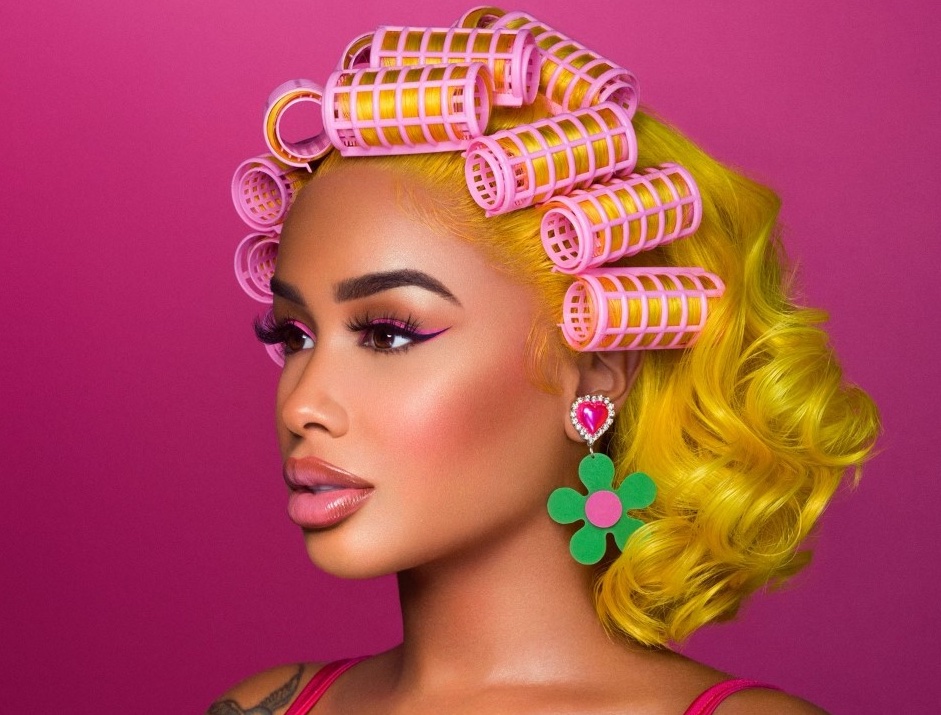Ever wondered about the dream doll nationality and what makes these dolls so special? If you're diving into the world of collectible dolls or simply fascinated by their allure, you're in the right place. Dream dolls have captured the hearts of enthusiasts worldwide, and understanding their origins can be a thrilling journey. In this article, we’ll explore everything you need to know about dream dolls, including their nationalities, cultural significance, and why they’re such a beloved phenomenon.
Let’s face it, dolls have been around for centuries, evolving from simple toys to sophisticated works of art. But dream dolls? They’re in a league of their own. These dolls aren’t just playthings; they’re masterpieces crafted with precision and care. From their lifelike features to their intricate designs, dream dolls represent a blend of artistry and craftsmanship that transcends borders. So, if you’ve ever wondered about the dream doll nationality, you’re about to uncover some fascinating insights.
Now, before we dive deep into the world of dream dolls, it’s worth noting that their appeal isn’t limited to a specific region or culture. People from all walks of life have fallen in love with these dolls, and understanding their origins can help us appreciate them even more. Whether you’re a collector, an artist, or just someone who appreciates beauty, this article will take you on a journey through the history, design, and cultural impact of dream dolls.
What Exactly Are Dream Dolls?
Dream dolls are more than just toys; they’re a reflection of creativity and imagination. These dolls are often designed to mimic human features with incredible detail, making them look almost lifelike. But what sets them apart from regular dolls? Well, dream dolls are crafted with a level of artistry that makes them stand out in the collectible world. They’re not just playthings; they’re pieces of art that collectors treasure.
Here’s the kicker: dream dolls come in various forms, sizes, and styles. Some are designed to resemble children, while others take on adult-like appearances. Their nationalities, however, play a huge role in shaping their identity. The dream doll nationality often influences the design, materials used, and even the cultural themes represented in the dolls.
Why Nationality Matters in Dream Dolls
So, why does the dream doll nationality matter? It’s simple: the country of origin often dictates the style, craftsmanship, and even the market demand for these dolls. For instance, dolls from Japan might emphasize delicate features and traditional kimono designs, while dolls from Europe could focus on elegance and sophistication. Understanding the nationality of a dream doll can give you a deeper appreciation for its cultural roots.
Let’s break it down:
- Japan: Known for ball-jointed dolls (BJDs) and their attention to detail.
- South Korea: Famous for modern, trendy designs that appeal to younger collectors.
- Europe: Offers classic, vintage-inspired dolls with a focus on elegance.
- USA: Known for innovative designs and a wide range of customization options.
History of Dream Dolls
The history of dream dolls is as fascinating as the dolls themselves. These dolls didn’t just appear overnight; they’ve evolved over time, influenced by cultural trends and technological advancements. The dream doll nationality has played a significant role in this evolution. For example, Japanese dream dolls, particularly ball-jointed dolls (BJDs), have a rich history dating back to the early 20th century. These dolls were initially created as playthings but quickly transformed into collectibles due to their intricate designs.
In Europe, dream dolls have a long-standing tradition of elegance and sophistication. Countries like Germany and France have been producing high-quality dolls for centuries, and their influence can still be seen in modern designs. Meanwhile, in the USA, dream dolls have taken on a more innovative approach, with collectors able to customize almost every aspect of their dolls.
Key Milestones in Dream Doll History
Here are some key milestones in the history of dream dolls:
- Early 1900s: The rise of porcelain dolls in Europe.
- Mid-20th Century: The introduction of vinyl dolls in the USA.
- 1990s: The emergence of ball-jointed dolls (BJDs) in Japan.
- 2000s: The global popularity of customizable dream dolls.
Types of Dream Dolls
Not all dream dolls are created equal. In fact, there are several types of dream dolls, each with its own unique characteristics. Understanding the different types can help you appreciate the diversity within the dream doll world. Let’s take a closer look:
1. Ball-Jointed Dolls (BJDs)
BJDs are perhaps the most famous type of dream doll, especially in Asia. These dolls are made with movable joints, allowing collectors to pose them in various positions. The dream doll nationality of BJDs often reflects their design. For instance, Japanese BJDs tend to have delicate features and intricate hairstyles, while South Korean BJDs focus on modern, trendy styles.
2. Vinyl Dolls
Vinyl dolls are another popular type of dream doll, particularly in the USA. These dolls are known for their durability and affordability. While they may not offer the same level of customization as BJDs, they’re still highly sought after by collectors. Vinyl dolls often come in a variety of sizes and styles, making them accessible to a wide range of enthusiasts.
3. Porcelain Dolls
Porcelain dolls have a long history, particularly in Europe. These dolls are often associated with elegance and sophistication. Collectors appreciate their delicate features and intricate designs. While porcelain dolls may not be as customizable as other types, their timeless beauty makes them a staple in the dream doll world.
Factors Influencing Dream Doll Nationality
Several factors influence the dream doll nationality, including cultural traditions, materials used, and market demand. Each country brings its own unique perspective to the world of dream dolls, resulting in a diverse range of designs. Here’s a closer look at how these factors shape the dream doll industry:
Cultural Traditions
Cultural traditions play a significant role in shaping the dream doll nationality. For example, Japanese dream dolls often incorporate traditional elements such as kimono designs and delicate features. In contrast, European dream dolls might emphasize elegance and sophistication, reflecting the continent’s long-standing tradition of fine craftsmanship.
Materials Used
The materials used in dream dolls can also vary depending on the country of origin. Japanese BJDs, for instance, are often made from high-quality resin, which gives them a smooth, lifelike appearance. Meanwhile, European porcelain dolls are crafted using fine porcelain, resulting in delicate and intricate designs. The choice of materials not only affects the appearance of the dolls but also their durability and value.
Market Demand
Market demand is another factor that influences the dream doll nationality. Collectors from different regions may have varying preferences, which can impact the design and production of dream dolls. For example, collectors in Asia might prefer dolls with traditional features, while those in the USA might lean towards more modern, customizable designs.
How to Choose the Right Dream Doll
Choosing the right dream doll can be a daunting task, especially with so many options available. However, by considering a few key factors, you can find the perfect doll for your collection. Here’s what you need to keep in mind:
1. Purpose
What’s your purpose in buying a dream doll? Are you looking for a plaything, a collectible, or a piece of art? Your purpose will dictate the type of doll you choose. For example, if you’re a collector, you might prioritize dolls with intricate designs and high-quality materials.
2. Budget
Budget is another important factor to consider. Dream dolls can range from affordable vinyl dolls to high-end BJDs costing thousands of dollars. Determine your budget beforehand to avoid overspending on a doll that may not meet your expectations.
3. Customization Options
Customization is a key feature of many dream dolls, particularly BJDs. If you enjoy personalizing your dolls, look for options that allow you to change their hair, clothes, and even facial features. This can add a personal touch to your collection and make each doll unique.
Top Dream Doll Manufacturers
When it comes to dream dolls, several manufacturers stand out for their quality and innovation. Here are some of the top names in the industry:
1. Volks (Japan)
Volks is a renowned manufacturer of BJDs, known for its high-quality resin dolls and intricate designs. Their dolls often incorporate traditional Japanese elements, making them a favorite among collectors.
2. Dollfie Dream (Japan)
Dollfie Dream is another popular brand in the BJD world. They offer a wide range of dolls with customizable features, allowing collectors to create their dream doll from scratch.
3. So-So (South Korea)
So-So is a South Korean brand that focuses on modern, trendy designs. Their dolls are popular among younger collectors who appreciate contemporary styles and affordable prices.
Collecting Dream Dolls: Tips for Beginners
If you’re new to the world of dream dolls, here are some tips to help you get started:
- Research: Learn about the different types of dream dolls and their nationalities to find the ones that suit your taste.
- Join Communities: Connect with other collectors to share tips, advice, and experiences.
- Start Small: Begin with an affordable doll and gradually build your collection as your knowledge and budget grow.
The Cultural Impact of Dream Dolls
Dream dolls have had a significant cultural impact, transcending borders and bringing people together. They’ve become a symbol of creativity, artistry, and cultural exchange. Whether you’re a collector, an artist, or just someone who appreciates beauty, dream dolls offer a unique way to connect with people from around the world.
Moreover, dream dolls have inspired countless artists and designers, leading to new innovations in the industry. From customizable features to intricate designs, these dolls continue to evolve, reflecting the changing tastes and preferences of collectors worldwide.
Conclusion
In conclusion, the dream doll nationality plays a crucial role in shaping the world of collectible dolls. From Japan’s delicate BJDs to Europe’s elegant porcelain dolls, each country brings its own unique perspective to the industry. Understanding the origins and cultural significance of dream dolls can help us appreciate them even more.
So, whether you’re a seasoned collector or just starting out, there’s always something new to discover in the world of dream dolls. Why not take the first step today? Explore the vast array of dream dolls available and find the ones that resonate with you. And don’t forget to share your experiences with the community – after all, the world of dream dolls is all about connection and creativity!
Table of Contents
- What Exactly Are Dream Dolls?
- Why Nationality Matters in Dream Dolls
- History of Dream Dolls
- Key Milestones in Dream Doll History
- Types of Dream Dolls
- Factors Influencing Dream Doll Nationality
- How to Choose the Right Dream Doll
- Top Dream Doll Manufacturers
- Collecting Dream Dolls: Tips for Beginners
- The Cultural Impact of Dream Dolls


